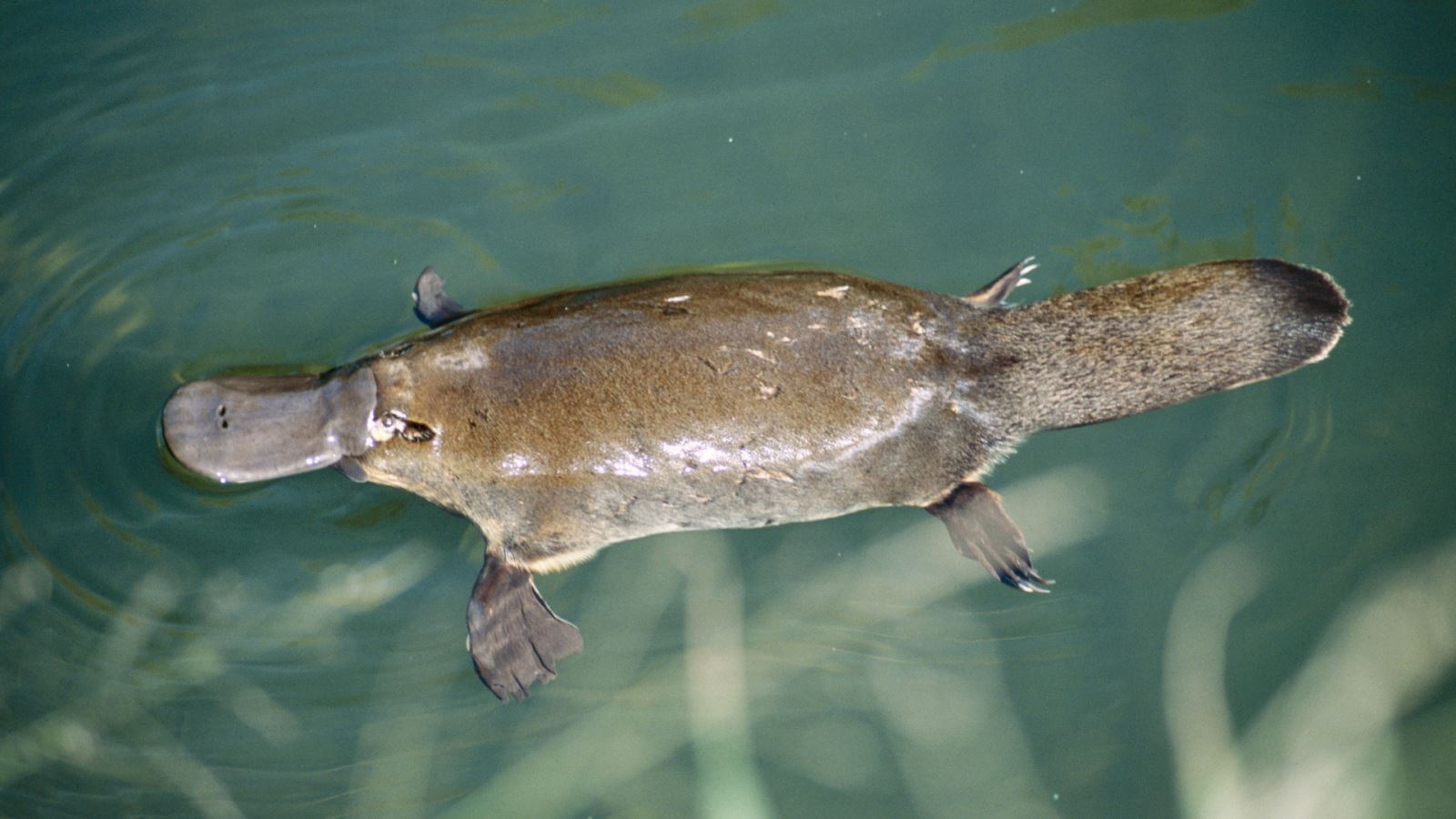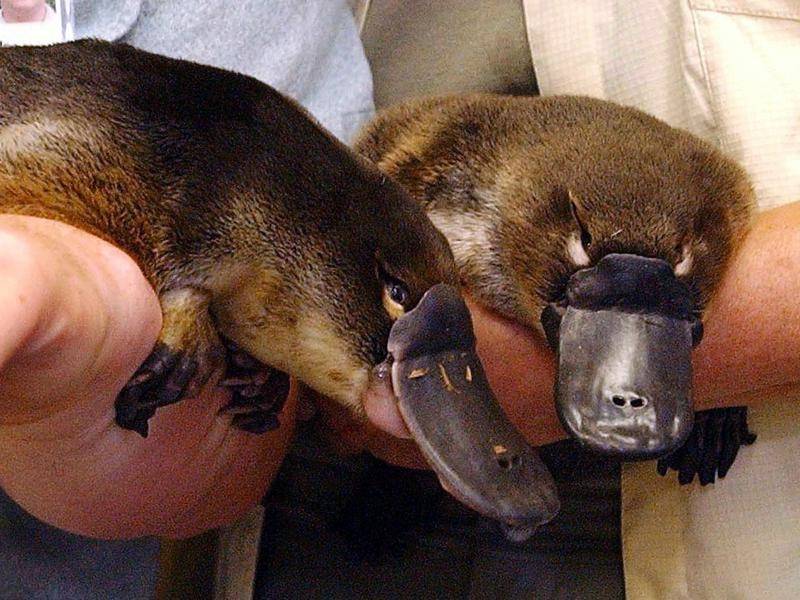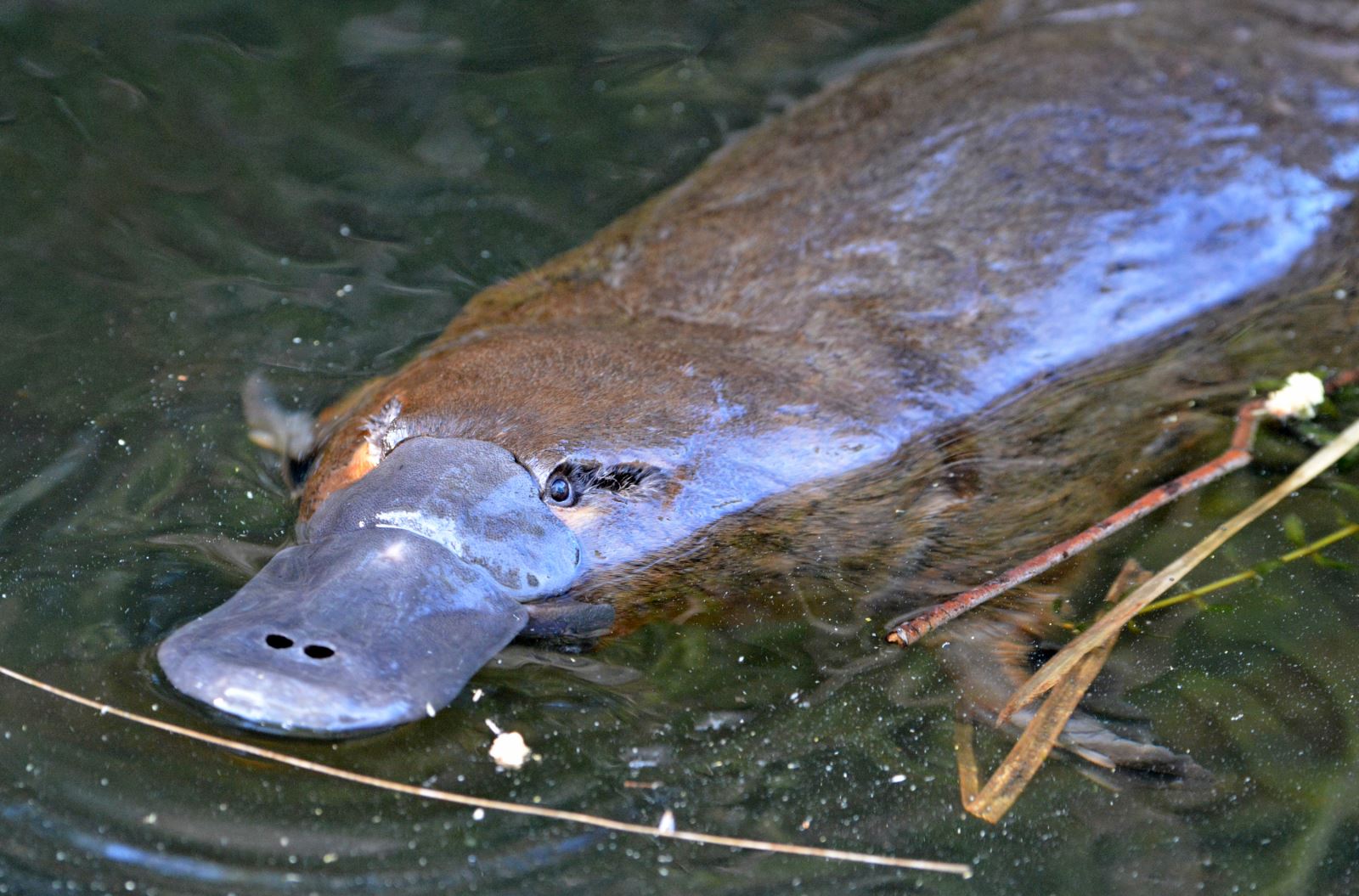The platypus, sometimes referred to as the duck-billed platypus, is a semiaquatic egg-laying mammal endemic to eastern Australia, including Tasmania. The platypus is the sole living representative of its family (Ornithorhynchidae) and genus (Ornithorhynchus), though a number of related species appear in the fossil record.

Together with the four species of echidna, it is one of the five extant species of monotremes, the only mammals that lay eggs instead of giving birth to live young. Like other monotremes it senses prey through electrolocation. It is one of the few species of venomous mammals, as the male platypus has a spur on the hind foot that delivers a venom capable of causing severe pain to humans.

The unusual appearance of this egg-laying, duck-billed, beaver-tailed, otter-footed mammal baffled European naturalists when they first encountered it, and the first scientists to examine a preserved platypus body (in 1799) judged it a fake, made of several animals sewn together.

The unique features of the platypus make it an important subject in the study of evolutionary biology, and a recognisable and iconic symbol of Australia. It has appeared as a mascot at national events and features on the reverse of the Australian twenty-cent coin, and the platypus is the animal emblem of the state of New South Wales.

According to en.wikipedia











